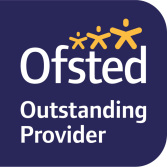

- Accident and Emergency Policy
- Animal Policy
- Behaviour Policy
- Compliments and Complaints Policy
- Confidentiality/Data Protection Policy
- Coronavirus Policy
- Equal Opportunities and Admissions Policy including Special Education Needs (SEN)
- Food and Drink Policy
- Illness, medication and Infectious Diseases Policy
- Mobile phone, camera, internet and social networking policy
- Safeguarding Children Policy
- Safety on Outings (including lost or missing child)
- Smoking, alcohol and drugs Policy
- Toileting, nappy changing and intimate care Policy
- Working With Parents
- SEND 14 questions from parents point of view
Toileting, Nappy Changing and intimate care Policy
Toilet training is a self-care skill that children can learn with our full and non-judgemental support. I work closely with parents to ensure that each child is comfortable and kept clean and dry during their time with me. I aim to provide the opportunity for all children to use the toilet independently and to provide assistance for those who need it. I will work with parents towards toilet training unless there are medical or other developmental reasons why this may not be appropriate.
Intimate care routines also include helping children to dress and undress themselves, change clothes according to the weather (e.g. putting swimming costumes on), washing intimate parts of the body, feeding and cleaning children after feeding, administering oral medication, hair care, helping children who have vomited etc.
All children have the right to be safe and to be treated with dignity and respect. I will accommodate their needs and work with parents/carers to encourage them to eventually be able to use the toilet independently wherever possible. Children’s privacy is considered and balanced with safeguarding and support needs when changing nappies and toileting. Details of nappy changes, potty and toilet trips will be shared with parents every day the child attends my setting via texts and/or short discussions at pick up time.
Procedure for toileting
1. Show the child where the toilet, step and paper is.
2. Allow the child free use of the toilet.
3. Encourage the child to use the toilet before we go out and before snack and meal times.
4. Encourage health and safety asking the child to close the toilet lid, flush and then wash and dry their hands using soap, water and the washable flannels available. Encourage the child to take this flannel and place it directly into the washing machine.
5. Listen to children who use the toilet on their own making sure to help where required.
6. Ask children if everything is OK once they have finished using the toilet.
7. Provide assistance for those requiring it in a private and discreet manner.
8. Talk about the use of the toilet openly with all children.
9. Should an accident occur, I will assist the child as necessary in a non-judgemental way, changing their clothes using fresh items provided by their parents/carer.
10. Soiled items of clothing will be double bagged and sent home with the parent/carer.
Procedure for using the potty
1. Show the children where the potty is kept, next to the toilet in the downstairs bathroom.
2. Allow the children free use of the potty.
3. Ask the children to tell us when they are going to use the potty so that we can be on hand.
4. Talk to the children about what they have done in the potty, look at it and praise them.
5. I wear disposable gloves and use toilet paper and sensitive wipes to clean the children.
6. Making sure the child is happy and fully clothed, encourage them to wash their hands using soap and water and dry on washable flannels available. Encourage the child to take this flannel and place it directly into the washing machine.
7. Remove the potty and flush the contents down the toilet.
8. Wipe the toilet down with a disinfectant toilet wipe.
9. Wash the potty with disinfectant cleaner.
10. Replace the potty to its usual place.
11. Double bag any baby wipes, gloves and the disinfectant toilet wipes and dispose of in outside black dustbin.
Procedure for nappy changes
1 I provide nappies, wipes, nappy sacks and nappy cream.
2. I am happy to use nappies, wipes and nappy creams supplied by parents/carers.
3. I change nappies approximately every 2 hours whilst the children are in my care unless I can see, hear or smell that they have soiled a nappy, in which case I will change it as soon as possible.
4. I will talk to the baby/child and explain what I am doing throughout.
5. The changing mat is on the floor inside the playroom, next to the box of nappies and other supplies.
6. I always wear disposable gloves when changing nappies using a new pair for each child.
7. Lower garments are delicately removed, the soiled nappy is undone and used to wipe any excess faeces away from the front to the back. The nappy is placed in a nappy sack.
8. Sensitive wipes are used to clean the area. Each dirty wipe is placed into the nappy sack with the soiled nappy.
9. If required nappy cream is applied by dabbing the affected area. Parents have signed permission for me to use nappy rash cream.
10. A clean nappy is put on making sure it is the correct size and fit for the baby/child.
11. The lower garments are put back on and the baby/child is removed from the changing mat and encouraged to carry on playing.
12. Babies and children are encouraged to wash their hands to get into good habits and for health and safety reasons. I provide assistance.
12. The changing mat is cleaned with a disinfectant cleaner.
13. The gloves are removed and put with the soiled nappy and dirty wipes, are sealed and double bagged and disposed of in the outside black dustbin.
14. I always wash my hands after disposing of all waste.
Other intimate care
- I always treat children with dignity and respect and I listen to the parents/carers and children; adhering to their preferences for where and how they would like intimate care to take place.
- I never undertake intimate care routines that have not been agreed with the parents/carers.
- If I observe any unusual markings, discolouration’s or swelling including in the genital area I speak to the parent/carer immediately unless I think this would be detrimental to the child. If this is the case, I will follow the procedure in my Safeguarding Policy and contact Surrey Children’s Single Point of Access (C-Spa) on 0300 470910.
- I report and record any unusual emotional or behavioural response by the child. A written record of concerns is made and kept in the child’s personal file.
- Soiled clothes are removed, double bagged and sent home with the child.
- The child is cleaned using a clean flannel and warm soapy water.
- Clean clothes are put onto the child, they may be able to help us to do this.
- Safe and comforting care is provided if the child needs to rest and be quiet or is not feeling well.
- Any washable items used (flannels, children’s clothes, spare swimming costumes or clothes kept at Ilana’s house etc) are washed in my washing machine at the hottest temperature that the items will take.
Advice on toilet training from the Department for Education can be found here ttps://help-for-early-years-providers.education.gov.uk/health-and-wellbeing/toilet-training
Policy Written by: Ilana Hill Date: 22 July 2012
Last updated and reviewed on 10 February 2025
| NOTICEBOARD | ||
|
This term we will be looking at: food that grows on bushes underground growers what are we grateful for hungry caterpillar sign language day Autumn South African heritage day food waste day shopping for food baking and cooking handwashing day food that grows on trees international chefs day Diwali apples pumpkins bonfire night remembrance day children in need road safety week thanksgiving st Andrews day Handas surprise our favorite foods Christmas and our topic for this term is: Fabulous Food I currently have no vacancies |

